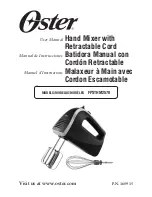
13
AUX SEND 1/2
Use RCA connectors to attach a digital effects device or
another S/PDIF device to the AUX SEND 1/2 and AUX
RETURN 1/2 digital terminals. AUX/BUS Fader Layer
faders control the AUX 1/2 SEND and RETURN. These
connections are not analog signals.
AUX SEND 3/4, 5/6
These terminals are 1/4” TRS phone plug connectors, at a
level of +4dB, 10k
Ω
UNBAL. They can be used for
connecting outboard signal processing devices, or for a
studio headphone feed, or as part of a multitrack output
setup. The possibilities are limited only by your imagination.
The AUX/BUS Fader Layer is the fader control for these
connections.
AUX RETURN 3/4, 5/6
These terminals are 1/4” TRS phone plug connectors, at a
level of +4dB, 10k
Ω
UNBAL. The AUX/BUS Fader Layer is
the fader control for these feeds.
2-Track B Input
This is used to connect an analog source strictly for
monitoring purposes, as it does not appear as an input to
the mixer. Connect a 1/4” TRS phone plug to the output
signal from a cassette deck, for example. The input signals
are sent to the 2 TR B IN LED button in the monitor section.
The level is +4dB, 10k
Ω
BAL.
Monitor A Out
These terminals are 1/4” TRS dual phone plugs at a level of
+4dB, 600
Ω
BAL, and connect the output of the MONITOR
A to an external amplifier (or powered speaker) for
monitoring in the control room (CR).
Format Select Switch
This switch is used to select the signal format of the
connected device, either AES/EBU or S/PDIF. The digital
input and output are both switched. For S/PDIF usage, an
optional adapter is required. You must make certain that the
adapter connects pin #1 and #3 together.
Clock Terminating 75
Ω
ON/OFF & Out / Thru
Switch
Next to the WORD CLOCK IN BNC connection, this switch
should be set to 75
Ω
OFF and Thru position if the
DA7 is
being used to pass the wordclock signal to other devices in
the chain.
Set the switch to 75
Ω
ON and OUT for terminating the
wordclock, if the
DA7 is slaved and located at the end of the
wordclock chain. The 75
Ω
ON and OUT position should
also be selected when the
DA7 is being used to slave other
devices to the
DA7’s wordclock. See Chapter 12, D-I/O in
the Users' Guide for more information.
Clock Input
This is used to synchronize the
DA7 to an external word
clock source. This allows the
DA7’s internal clock to slave to
another reference, such as a digital multi-track deck or other
device. Use a BNC connection to attach an external
wordclock source.
Clock Output
This is used to slave an external device, such as a digital
multi-track machine, to the
DA7 internal clock. It can also be
used to relay an external wordclock that is being used to
synchronize the
DA7 to an external device. Using a BNC
connector, other devices can synchronize to the
DA7
wordclock.
Serial Terminating Switch
Set the switch to ON if the
DA7 is the termination point of
the RS-422/485 serial transmission path. The 110
Ω
switch
turns this function OFF/ON.
Serial Port [RS-422/485]
Use this serial port to connect an IBM compatible computer
having an RS-422/485 port. Connect to the
DA7 with a D-
SUB 9-pin connector. Optional remote control software for
your computer can be used to control the
DA7, thus
expanding the features and capabilities of the mixer.
Serial Port [TO PC]
Use this serial port to connect with a Macintosh computer. If
the computer is an IBM compatible, you may need a
conversion cable that changes a Mini-DIN 8 pin (for TO PC)
to a D-sub 9 pin(for RS-232C), available at nearest dealer.
Optional remote control software for your computer can be
used to control the
DA7, thus expanding the features and
capabilities of the mixer.
MIDI IN
This connector is used to receive signals from peripheral
MIDI devices.
MIDI OUT
This connector is used to send signals to peripheral MIDI
devices. The
DA7 can be used as a MIDI controller. See
Chapter 11, MIDI for details.
METER BRIDGE Connector
This is used to connect the optional Meter Bridge for the
DA7.
See Chapter 17, Options in the Users' Guide for more
details.















































